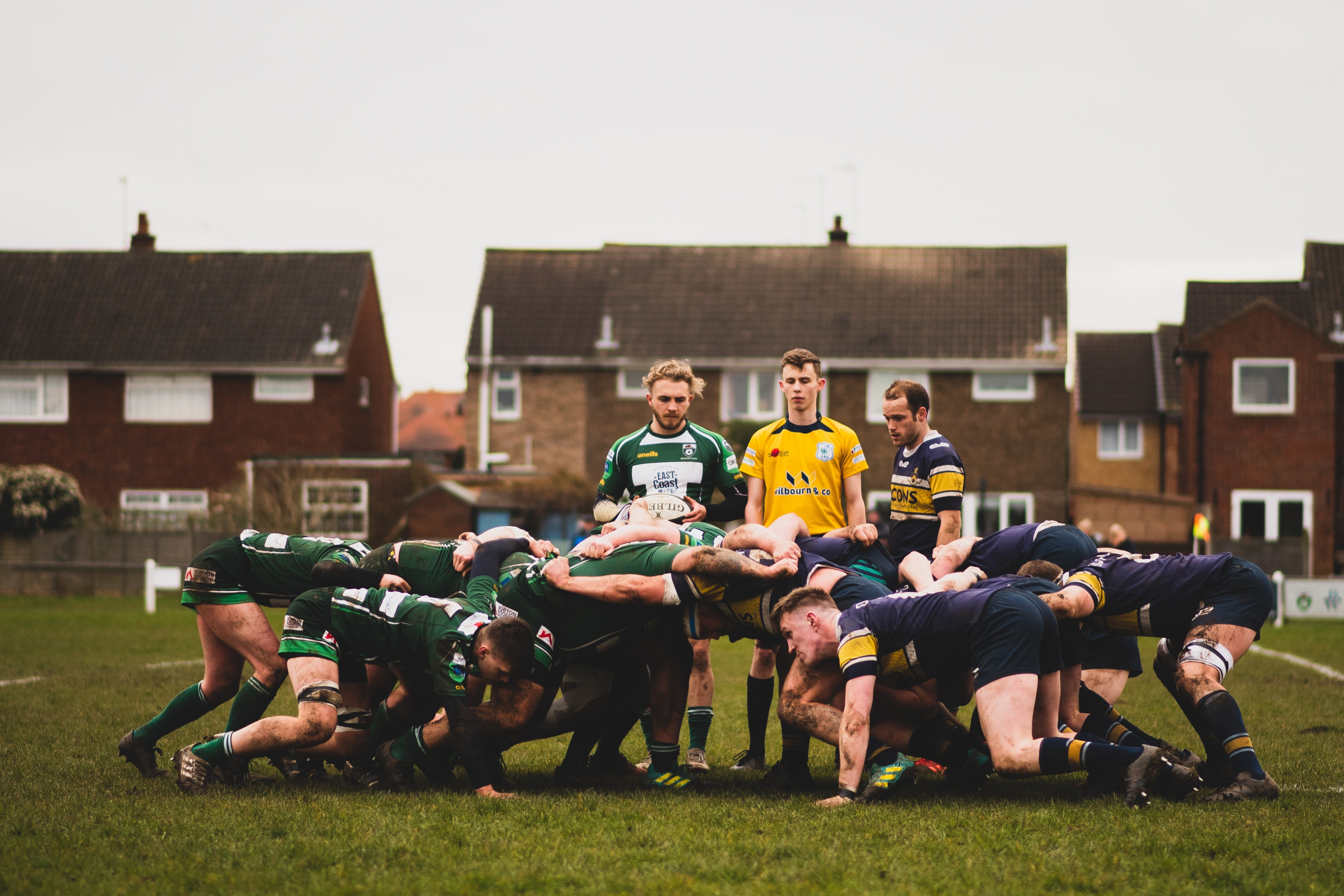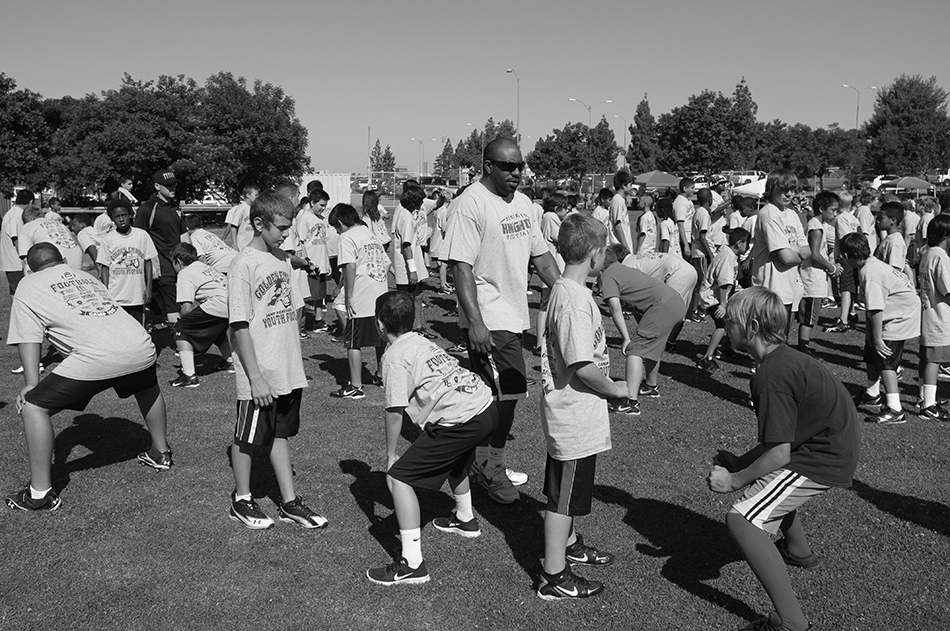In today’s fast-paced insurance industry, wholesale insurance brokerages play a pivotal role by managing complex, high-risk policies that are beyond the scope of standard retail agents. As these insurance brokers navigate an intricate landscape of risks and regulations, advanced technology adoption has become a critical component in insurance business models.
Embracing innovative technologies not only enhances operational efficiencies but also ensures that insurance agents can offer more accurate, timely, and customized solutions to their clients – dramatically improving customer service. Here, we explore how cutting-edge technology is revolutionizing wholesale broker channels, paving the way for more streamlined processes and improved client outcomes.

The Role of Technology in Wholesale Insurance Brokerage
Wholesale insurance brokerage technology encompasses a broad range of digital tools and software solutions designed to optimize the brokerage process, from risk assessments to claims management. This technology spans systems for automating manual tasks, sophisticated data analytics platforms, cloud-based communication tools, and security frameworks that protect sensitive client information. The goal is to facilitate smoother operations that can handle complex, high-risk insurance placements with efficiency and accuracy, making insurance providers more competitive.
The impact of technology trends on the wholesale insurance brokerage landscape is profound and multifaceted. Automation is one of the most significant drivers of change, allowing brokers to streamline everyday tasks such as data entry, quote comparison, and policy management. This not only speeds up the process but also reduces the likelihood of human error, ensuring that client data is handled with utmost precision, further protecting wholesale brokers.
Wholesale Brokerage Channels and Data Insights
Data analytics have also revolutionized the sector by enabling insurance brokers to analyze vast amounts of information quickly, identify trends, and make informed decisions based on predictive models. These capabilities allow brokers to better assess risks and tailor insurance solutions to specific client needs.
Moreover, technology has facilitated improved communication within the wholesale insurance network, including secure sharing of information between brokers, insurers, and clients. Enhanced connectivity helps maintain a flow of up-to-date information, crucial for the dynamic environment of insurance underwriting.

In addition, customer relationship management (CRM) systems are increasingly being adopted to maintain detailed records of client interactions, streamline customer service processes, and enhance client satisfaction. These systems integrate seamlessly with other brokerage technologies, creating a cohesive ecosystem that supports every phase of the brokerage process.
Through these technological advancements, wholesale insurance brokerages are not only able to enhance their operational efficiencies but are also better positioned to respond to the evolving demands of the market and deliver superior service to their clients.
Key Technologies Revolutionizing Wholesale Insurance Brokerages
In the world of wholesale insurance brokerage, automation tools have become a cornerstone for enhancing efficiency. These tools automate routine tasks such as document processing, policy issuance, and compliance checks, which traditionally consumed considerable time and resources. By leveraging automation, brokerages can reduce operational costs, minimize errors, and free up their staff to focus on more strategic activities like client consulting and risk assessment. Moreover, automation swiftly handles even the most complex insurance applications, increasing responsiveness to client needs.
Data analytics technologies have transformed how wholesale brokers understand and predict risks. Utilizing advanced predictive models and machine learning algorithms, brokerages can now process historical data to forecast future trends, assess risks more accurately, and personalize insurance products for clients. These insights enable brokers to make informed decisions quickly, providing a competitive edge in securing the best terms for clients. Furthermore, analytics can identify potential market changes, helping brokerages to adapt their strategies proactively.

Benefits of Technology Integration in Wholesale Brokerage
Integrating technology into wholesale insurance brokerage operations significantly enhances overall efficiency. Automation of routine tasks, such as form filling and report generation, drastically reduces processing times. This not only accelerates the underwriting and claims processes but also allows brokers to handle more clients and cases without sacrificing quality. Faster processing is especially crucial in the wholesale market, where the ability to quickly adapt to changes can provide a critical competitive advantage.
Technological tools are invaluable for increasing the accuracy of data entry, calculations, and other processes prone to human error. Sophisticated algorithms and data validation technologies automatically identify and correct errors, ensuring the information processed is reliable and accurate. This is particularly important in the wholesale insurance sector where complex and high-value policies are the norms. Improved accuracy helps in maintaining compliance with industry regulations and reduces the risk of costly mistakes.
Challenges in Adopting New Technologies
Adopting new technologies in wholesale insurance brokerage often encounters resistance from within.Many organizations have deeply ingrained established practices and traditional methods, and employees accustomed to conventional processes often meet the shift to new systems with skepticism. Overcoming this resistance requires effective change management strategies, including training, education, and demonstrating the tangible benefits of new technologies to all stakeholders.
The financial outlay for integrating advanced technologies can be substantial, especially for small to mid-sized brokerages. The costs of software acquisition, system customization, and infrastructure upgrades can be significant, and there is often uncertainty regarding the return on investment. Brokerages must carefully evaluate the potential financial benefits against the initial costs and develop a clear strategy for technology investment that aligns with their long-term business objectives.
As brokerages adopt technology solutions that collect and store large volumes of sensitive information, they also face increased risks related to data security and privacy. Ensuring the protection of client data is paramount, as breaches can lead to significant financial penalties and damage to reputation. Brokerages must invest in robust cybersecurity measures, comply with data protection regulations, and continually update their security practices to address evolving threats.

Future Trends in Wholesale Insurance Brokerage Technology
Several emerging technologies are set to significantly influence wholesale insurance brokerages as the digital landscape evolves. Artificial Intelligence (AI) continues to advance, offering more sophisticated risk assessment tools and predictive analytics that can foresee industry trends and client needs. Additionally, Internet of Things (IoT) devices are becoming integral in real-time data collection, enhancing the accuracy of risk models and policy customization. Virtual and augmented reality technologies are also emerging, potentially transforming client interactions and training by providing immersive experiences that can explain complex insurance concepts in intuitive ways.
The integration of technology will likely shape the future of wholesale insurance brokerage, making brokerages more agile, predictive, and client-focused. We can expect an increased reliance on cloud-based platforms that offer enhanced scalability and flexibility, enabling brokers to respond more effectively to market changes. The adoption of blockchain could become more widespread, not only to enhance transparency and reduce fraud but also to streamline compliance through smart contracts. Moreover, as data privacy concerns continue to mount, advanced encryption methods and more stringent cybersecurity protocols will become the norm.
In the long term, technology will drive a more personalized insurance experience by tailoring policies to individual client behaviors and preferences, leveraging the deep insights provided by data analytics. This will not only improve client satisfaction but also optimize risk management and pricing strategies, ensuring that brokerages can offer competitive yet financially viable solutions.
Quote, Bind, Issue in Minutes: LIO Specialty’s Revolutionary Portal
The integration of technology within the wholesale insurance brokerage sector is not just a trend, but a fundamental shift in how the industry operates and thrives in an increasingly digital world. From automation tools that streamline administrative tasks to advanced analytics that enhance decision-making and predictive capabilities, technology has proven indispensable in enhancing operational efficiency and accuracy.
LIO Specialty is dedicated to providing a seamless and efficient insurance experience through our state-of-the-art technology. Our innovative platform offers straight-through processing for new business submissions, delivering quotes in minutes and ensuring all your needs—from underwriting to customer service—are handled expertly by our multifaceted Service Specialists. We eliminate the common frustrations of departmental barriers and offer competitive coverage tailored to meet the needs of our customers.
Login to our platform today to check it out by clicking here.
In the world of nonprofit organizations, the term “nonprofit liability insurance” is more than just a buzzword—it’s a safeguard. Whether it’s navigating the pitfalls of operational hazards or the legalities of governance, nonprofit insurance stands as the first line of defense for nonprofit entities.
Nonprofit Organizations 101: A Quick Guide
Nonprofit organizations are defined by their primary goal: to address societal needs rather than generate profit for owners or shareholders. These entities vary widely in focus and function, ranging from very small businesses and community-based groups to large international NGOs.

The missions of nonprofit organizations are as varied as the communities they serve, while their operational models are designed to maximize impact, often relying on a mix of volunteer efforts, donations, and grant funding to sustain their activities. This reliance on diverse funding streams and the engagement in wide-ranging activities underscore the importance of comprehensive nonprofit liability insurance to protect against potential legal and financial challenges.
Introduction to Nonprofit Insurance for Brokers

For brokers, understanding the unique landscape of nonprofit insurance is a necessity. This sector, which consists of more than 1.3 million charitable organizations across the US, is marked by its mission-driven focus. Nevertheless, nonprofit organizations face distinct challenges and risks.
From liability claims to property damage and beyond, the potential for unforeseen incidents looms large. This is where nonprofit insurance serves as a protective layer, ensuring that the organization’s resources are safeguarded.
The nonprofit insurance market is in a state of flux, influenced by broader economic conditions, changing regulatory environments, and evolving risks. In recent years, we’ve seen a tightening of coverage in certain areas, driven by increased claims and a heightened awareness of risks.
What You Need to Know About Nonprofit Liability Risks
Nonprofits encounter a myriad of risks, from accidents during events to allegations of mismanagement. Key risks include personal injury claims at organization-sponsored events, wrongful termination and employment practices liability (EPL) claims from staff or volunteers, and data breaches compromising sensitive donor information. Additionally, nonprofits may face legal challenges related to their operations, including contractual disputes and negligence claims.
Without proper coverage, an organization may find itself financially liable for costly claims, draining resources that would otherwise support its mission. Beyond the immediate financial strain, facing a liability claim without adequate insurance can damage an organization’s reputation, potentially affecting donor support and volunteer engagement.

Deep Dive: What is D&O Insurance for Nonprofits
Directors and Officers (D&O) insurance, also known as nonprofit management liability insurance is a specialized form of liability coverage essential for protecting the assets of nonprofit board members and officers. This provides protection against claims arising from their managerial decisions or actions that have allegedly caused harm to the organization or others.
For nonprofits, D&O insurance is not just a luxury—it’s a necessity. It reassures current and prospective board members, directors and officers that they will not be personally financially devastated due to their involvement in the organization. Moreover, nonprofit organization management insurance reflects a commitment to governance and financial stewardship, bolstering its credibility and integrity.

What Nonprofit Liability Insurance Covers
Nonprofit liability insurance is an umbrella term for various types of business insurance coverages designed to protect organizations against different risks. This insurance plays a pivotal role in safeguarding an organization’s mission, assets, and its people from unforeseen liabilities. The essence of nonprofit liability insurance lies in its ability to provide a safety net, allowing these organizations to continue their invaluable work without the looming threat of financial ruin due to legal disputes or claims.
- General Liability Insurance: This foundational coverage protects against claims of bodily injury, property damage, and associated legal costs. Whether a visitor trips and falls at your event or you accidentally damage a rented space, general liability insurance is your first line of defense.
- Professional Liability Insurance: Also known as Errors and Omissions (E&O) insurance, this coverage addresses claims related to the services your nonprofit provides. If your organization offers counseling, educational programs, or other professional services, E&O insurance can protect against claims of negligence or harm resulting from those services.
- Directors and Officers (D&O) Insurance: This type of insurance is crucial for protecting the personal assets of your organization’s board members and officers. It covers legal fees, settlements, and other costs associated with lawsuits alleging wrongful acts in their managerial roles.
- Specialized Coverages: Depending on your nonprofit’s activities, you may need additional protections such as abuse and molestation coverage, employment practices liability insurance (EPLI), or cyber liability insurance. These coverages address specific risks that could otherwise severely impact your organization.
To ensure adequate protection for a nonprofit without overspending on unnecessary coverage, you must assess your organization’s unique risks. Engage with an insurance provider that understands the nonprofit sector. They will be able to offer guidance on which coverages are critical for your specific activities and operations.

What Sets LIO Apart?
At LIO Insurance, we understand the unique challenges faced by nonprofit and social service organizations. We craft our insurance solutions with the specific needs of these groups in mind. As such, we offer comprehensive coverage that includes property, general liability, professional liability, and more.
We take pride in offering flexible and affordable insurance options that let organizations focus on their mission, confident in the effective management of their risks. We offer tailored insurance solutions, including prime property enhancements and specialized general liability coverage options, ensuring that every organization receives the level of protection it deserves. With LIO Insurance, nonprofits can expect a partner that is committed to their success and well-being. We provide peace of mind through superior coverage and expert support.

FAQ:
Does my nonprofit need insurance?
Yes, insurance for nonprofits really is vital for legal and operational security. It guards against unforeseen risks that could jeopardize your nonprofit’s mission and financial stability.
What type of insurance does a nonprofit organization need?
Key insurance types for nonprofits include:
- General Liability Insurance
- Directors and Officers (D&O) Insurance
- Professional Liability Insurance
- Employment Practices Liability Insurance (EPLI)
- Property Insurance
- Cyber Liability Insurance
- Hired/Non-Owned Auto Coverage
Should nonprofit organizations have D&O insurance?
Definitely, D&O insurance is crucial. It protects the personal assets of a nonprofit board of directors and officers from claims related to their organizational roles. This ensures the nonprofit can attract and retain qualified leadership.
How difficult is it to quote and bind a nonprofit liability insurance policy?
The process can be straightforward with the help of experienced brokers. It involves assessing needs, gathering information, reviewing quotes, and selecting the appropriate coverage for your nonprofit. Experienced agents simplify the process, ensuring you get suitable coverage efficiently.
In the dynamic realm of fitness, where health and vigor are paramount, the significance of robust aerobics studio insurance strategies cannot be overstated. Owners and operators of fitness centers are tasked with a dual mandate. They must foster a safe, energetic environment for clients to exercise and pursue their fitness goals, while navigating the multifaceted risks associated with running such a vibrant establishment.
As these studios become a staple in the fitness industry, a comprehensive understanding of aerobics studio insurance needs is crucial. This encompasses a thorough grasp of liabilities, property requirements, medical costs, and the unique operational risks inherent to the world of these fitness studios, ensuring that the studio’s assets, employees, and members are adequately protected against unforeseen events.
Aerobics studios face a distinct set of challenges. These range from equipment-related injuries to professional liability insurance concerns, each demanding specific insurance solutions. The intricate balance between offering an engaging fitness experience and mitigating legal and financial exposures requires a well-considered insurance portfolio.

Setting the Stage for Aerobics Studio Safety
Aerobics studios represent a vibrant and unique segment within the fitness industry. They appeal to a niche market, offering specialized classes that often require less heavy equipment than traditional gyms. This specificity helps attract a dedicated clientele. It also places these studios on the higher end of the profit spectrum. With profit margins potentially ranging from 20% to 40%, aerobics studios stand out as particularly lucrative ventures, especially when compared to the average gym profit margins of 10-15%.
The path to establishing a successful aerobics studio intertwines operational efficiency, business income, strategic planning, quality service, and responsiveness to industry trends. Each element plays a pivotal role in its success. However, along with these operational aspects of small business, there’s a critical component often overlooked: insurance and liability.

Why Aerobics Studios?
The enduring popularity of aerobics studios in the United States underscores their potential for profitability and growth. However, breaking into this industry is not without challenges. It requires a nuanced approach, balancing passion for fitness with savvy business practices.
Pathways to Success for an Aerobics Studio
The journey to creating a thriving aerobics studio intertwines meticulous planning and agile adaptation. Here are the key steps to charting a successful path:
-
Crafting a Strategic Business Plan:
It begins with carving out your unique space in the fitness market. Understand your target demographic, analyze market trends, and construct a financial blueprint that accounts for both short-term needs and long-term growth.
-
Selecting an Optimal Location:
The right location is a cornerstone of success. It’s about more than just an address; it’s about accessibility, visibility, and aligning with the demographics of your target market.
-
Prioritizing Equipment Quality:
In aerobics, the right equipment enhances both safety and experience. Opt for high-quality, durable equipment that meets the needs of your diverse range of classes, without overwhelming your space.
-
Building a Team of Dedicated Professionals:
Your staff is the heartbeat of your studio. Invest in hiring individuals who are not only skilled but also share your passion for fitness and wellness. Their energy and expertise will be infectious to your clientele.
-
Fostering a Vibrant Community Atmosphere:
Create an environment that encourages connection and camaraderie among members. A strong, supportive community can be your best advocate, fueling both retention and referrals.
-
Introducing Innovative and Varied Programming:
Stay ahead of the curve by constantly refreshing your class offerings. Diversity in programming caters to a wide array of preferences and keeps your clients engaged and challenged.
-
Emphasizing Marketing and Brand Development:
Develop a compelling brand and robust marketing strategy. This should include an active online presence, community engagement, and consistent branding that resonates with your target audience.
-
Implementing Rigorous Health and Safety Measures:
Safety is paramount. This includes not just physical safety protocols but also financial safeguards through comprehensive insurance coverage, protecting against liabilities and unforeseen circumstances.
-
Adapting to Industry Evolution:
The fitness world is dynamic. Keep a keen eye on emerging trends. You should always be ready to adapt your business model, offerings, and strategies to stay relevant and appealing to your clients.
In essence, building a successful aerobics studio is a multifaceted endeavor. It demands a balance of strategic foresight, operational excellence, and a deep understanding of both your clientele and the broader fitness landscape.
Demystifying Insurance: Understanding Aerobics Studio Risks
For insurance brokers specializing in fitness-related industries and aerobics studio and gym owners themselves, a common language of insurance terms is essential. Brokers need to effectively communicate the nuances of policies, while studio owners must understand these details to make informed decisions. Key terms include ‘liability coverage’, ‘indemnity’, ‘aggregate limits’, and ‘risk assessment’, each playing a significant role in crafting the right insurance strategy.
The Necessity of Insurance for Studio Protection
-
Understanding the Inevitable Risks:
Both brokers and studio owners must acknowledge that operational risks are inevitable in the fitness industry. This understanding forms the basis of identifying the right insurance solutions. From equipment failures to injury claims, being prepared for the unexpected is crucial.
-
Tailoring Gym Insurance:
The challenge for brokers is offering bespoke insurance solutions. The needs of an aerobics studio can vary greatly, influenced by its size, services, and client demographics. It’s essential for brokers to understand these nuances and for studio owners to clearly articulate their specific requirements.
- Mitigating Financial Impact:Unforeseen incidents can have severe financial repercussions. For brokers, it’s about providing a safety net through comprehensive coverage that addresses potential financial losses. For studio owners, it’s about investing in an insurance plan that safeguards their business’s financial health.
-
Legal Protection and Liability:
Brokers must guide studio owners through the complexities of liability and the importance of being prepared for legal challenges. Insurance is a critical tool in managing legal risks, covering everything from defense costs to settlements.
-
Contractual Compliance:
Brokers should assist studio owners in understanding and fulfilling their contractual insurance obligations. This may involve lease agreements, employee contracts, or service agreements, each with its own insurance stipulations.
-
Comprehensive Coverage Against Hazards:
A well-rounded insurance policy covers more than just liability; it includes protection against property damage, theft, and even business interruptions. Brokers play a key role in explaining these aspects to studio owners, ensuring they recognize the value of extensive coverage.
For insurance brokers dealing with specialty fitness insurance and aerobics studio owners, the realm of fitness facility insurance is a shared journey. It’s about creating a partnership where risks are clearly understood, coverage is meticulously tailored, and both parties are equipped to navigate the unique challenges of the fitness industry with confidence and clarity.

Core Insurance Types for Aerobics Studios
In the realm of aerobics studios, both insurance brokers specializing in the fitness center-related policies and studio owners themselves must navigate a complex landscape of risks and coverage needs. Understanding and providing the right mix of insurance policies is key to ensuring comprehensive protection and business sustainability.
- Commercial Property Coverage is a cornerstone for any aerobics studio. This policy broadly encompasses protection for the physical assets of the studio, including the building, equipment, and personal property. It extends to cover potential losses due to equipment breakdown and business interruptions, ensuring the studio’s financial stability in the face of operational setbacks.
- General Liability Coverage plays a crucial role in safeguarding studios against claims of bodily injury and property damage. This type of policy is designed to cover a range of liabilities that can arise from everyday studio operations. For brokers, the challenge lies in tailoring these policies to cover broad risks, including everything from client injuries to potential legal issues related to the studio space. For studio owners, understanding the extent of coverage, including aspects like legal defense costs and specific liabilities, is critical in choosing the right policy.
- Abuse and Molestation Coverage is a sensitive yet essential aspect of insurance for businesses in the fitness industry. It offers protection against claims of abuse, a crucial coverage given the physical nature of aerobics training. This coverage typically includes a substantial limit for each occurrence and often comes with the flexibility to be included as part of the general liability policy. It’s a key area where brokers can provide valuable guidance to studio owners, ensuring they understand the importance and specifics of this coverage.
In addition to these fundamental policies, the dynamic nature of aerobics studios often necessitates specialty coverages. These cater to unique risks and scenarios specific to the fitness industry. For both brokers and studio owners, the focus should be on creating a comprehensive insurance portfolio that not only meets the basic requirements but also addresses the specific nuances of the aerobics studio and fitness business.
Selecting the Right Coverage: A Comprehensive Guide
When it comes to selecting insurance for an aerobics studio or training session, several key factors influence both the insurance cost, and scope of coverage. Understanding these elements is crucial for studio owners to ensure they have adequate protection without unnecessary expenditures.

Factors Affecting Insurance Costs:
The cost of insurance for an aerobics studio or health club varies based on several aspects:
- Size of the Studio: Larger studios generally face higher insurance costs due to the increased likelihood of incidents and the greater number of clients served.
- Location: Geographic location can influence risk levels and, consequently, insurance premiums. Areas prone to natural disasters or with high litigation rates might see higher costs.
- Number of Employees: More staff members can lead to increased liability and workers’ compensation insurance costs.
- Services Offered: The variety and nature of services provided can impact risk assessments. Studios offering high-intensity classes or specialized training might require more comprehensive coverage.
- Value of the Business: The overall valuation of the studio, including equipment and property value, plays a significant role in determining insurance premiums.
For small to medium-sized gyms, a baseline of coverage typically includes public liability, workers’ compensation, property protection, and professional liability. While adding additional coverages like cyber protection and medical payments can increase costs, they provide long-term protection for the business.
LIO Insurance Policies Check All Your Boxes
In the burgeoning fitness studio industry, which boasted over 115 thousand businesses in the United States in 2023, the challenge for insurance brokers and studio owners lies in finding insurance solutions that are as diverse and dynamic as the personal training industry itself. This is where LIO, a modern insurance carrier, comes into play, offering a seamless and efficient insurance experience tailored for the evolving needs of fitness businesses.
Efficiency and Simplicity with LIO:
LIO stands out by offering an incredibly swift process for obtaining insurance quotes – a matter of minutes, not days. This efficiency is a game-changer in an industry where time is of the essence. The simplicity of LIO’s approach extends to straight-through processing with immediate policy issuance, making the traditionally cumbersome process of securing insurance to protect your business that much more straightforward.
Customer-Centric Features:
LIO’s commitment to customer satisfaction is evident in its impressive Net Promoter Score of 90. This far exceeds the industry average of 37. This high level of client satisfaction is supported by features like online claims submission, excellent customer service, flexible online payment options, and a streamlined, paperless process. These features collectively contribute to a hassle-free insurance experience, allowing brokers and studio owners to focus more on their businesses and clients.
The LIO Advantage:
At the core of LIO’s success is a blend of advanced technology and deep industry experience. By leveraging technology, LIO has simplified and accelerated the insurance process, addressing the common pain points of complexity and slowness in the traditional insurance model. Decades of experience back this technological edge, ensuring that every aspect of the insurance process is handled with proficiency and insight.
Expertise and Reliability:
LIO’s executive team, with an average of over 20 years of experience in various insurance domains, brings a wealth of knowledge to the table. The company’s background, having been founded by the Maguires, who previously established a successful multi-billion dollar commercial insurance company and carrier, adds to its credibility and reliability in the industry. LIO’s A- rating by AM Best further underscores its stability and trustworthiness as an insurance provider.
Tailored for Fitness Industry Needs:
For gym and aerobics studios, LIO’s approach means not just obtaining insurance quickly, but also having access to a range of services tailored to their specific business insurance needs. From direct access to LIO’s team without the delay of call centers to experienced adjustors handling claims, every aspect of LIO’s service is designed to support the unique requirements of fitness businesses.
For those in the fitness industry, particularly aerobics studios, choosing LIO for insurance needs translates to a partnership that offers speed, simplicity, customer-focused services, and a depth of expertise. This combination not only eases the process of obtaining and managing insurance but also ensures that the studios are comprehensively protected, allowing them to thrive in a competitive market.

Frequently Asked Questions (FAQs) and Resources
What types of insurance do aerobics studios typically need?
Aerobics studios generally require a combination of Commercial Property Coverage, General Liability Insurance, and Abuse and Molestation Coverage. Depending on the specific needs, they may also need Professional Liability, Workers’ Compensation, and specialty coverages.
How does the size of my aerobics studio affect my insurance needs?
The size of your studio can impact the extent and cost of insurance coverage. Larger studios may face higher risks and thus require more comprehensive coverage, which can influence premium costs.
What factors influence the cost of insurance for an aerobics studio?
Factors like the studio’s size, location, number of employees, services offered, and overall value of the business all influence insurance costs.
Can I get a quick insurance quote for my studio?
Yes, companies like LIO offer quick, even instant, insurance quotes, streamlining the process significantly.

Exploring Nonprofit Management Liability Insurance
Nonprofit organizations play a crucial role in addressing social issues, supporting communities, and making a positive impact on society. However, with this important work comes a range of challenges and risks that can threaten the sustainability and success of these organizations. Unforeseen risks such as lawsuits, financial mismanagement, and accidents can have devastating consequences for nonprofits. That’s where nonprofit management liability insurance comes into play.
Understanding it is essential for those involved in both leading and supporting nonprofits. Nonprofit managment liability can encompass various areas of risk, including employment practices liability (EPL), directors and officers (D&O) liability, fiduciary liability, professional liability, and cyber liability. Each of these areas presents unique challenges that can arise unexpectedly.
The Need for Specialty Insurance in Nonprofits
Nonprofits operate within a complex regulatory framework, necessitating compliance with various laws and regulations. This complex landscape gives rise to numerous risks that can lead to legal and financial repercussions.
Insurance plays a vital role in safeguarding nonprofits by providing financial protection against potential losses stemming from lawsuits or other liabilities. It acts as a safety net that allows organizations to continue their work without being burdened by significant financial setbacks.
Tailoring Insurance to Nonprofit Needs
Each nonprofit organization has unique needs based on its operations, size, and the demographic it serves. Tailored insurance coverage is essential in providing each nonprofit entity adequate protection against the specific risks encountered.
Having appropriate insurance coverage ensures that nonprofits can continue operating even when faced with unexpected challenges or lawsuits. It provides peace of mind to nonprofit board of members and executives who can focus on fulfilling their mission without constantly worrying about potential threats.
In addition to financial protection, insurance also helps nonprofits maintain their reputation and credibility in the community. By demonstrating that they have taken steps to mitigate risks and protect their stakeholders, nonprofits can build trust and attract support from donors, volunteers, and other key stakeholders.

Directors and Officers (D&O) Insurance: A Closer Look
Directors and Officers (D&O) Insurance forms a significant pillar of management liability insurance, designed explicitly to provide a safety net for the personal assets of the individuals steering the nonprofit organization.
This insurance plays a crucial role when legal actions are initiated due to the managerial decisions or actions undertaken by these individuals on behalf of the organization they represent. Here’s a quick overview of this complex topic.
The Scope of D&O Coverage
D&O Insurance covers a range of allegations including wrongful acts, errors, omissions, breach of fiduciary duty, misstatements, or misleading statements made by directors and officers while managing the organization.
Personal Asset Protection
In the absence of D&O insurance, the personal assets of directors and officers stand vulnerable in the face of legal proceedings. This particular insurance serves as a financial bastion, ensuring that the personal assets of these individuals remain untouched and secure against legal fees.
Tailored Coverage
The insurance coverage necessitates precise tailoring to align with the specific needs and risks intrinsic to the nonprofit organization, taking into account pivotal factors such as its size, the nature of its operations, and its financial health, to provide a bespoke insurance solution.
Legal Defense Costs
Legal expenses and defense costs have the potential to skyrocket swiftly, rendering D&O Insurance a sagacious investment for ensuring a robust legal defense. This insurance plays a crucial role in maintaining the organization’s financial equilibrium and preserving its reputation amidst legal challenges.
Why D&O Insurance Matters for Nonprofits
D&O Insurance is pivotal for nonprofits as it not only preserves the personal assets of the individuals involved but also safeguards the organization’s resources and reputation. This ensures uninterrupted pursuit of its mission. The assurance of D&O insurance reflects prudent risk management, which is integral for the sustained growth and effectiveness of nonprofits.
Importance of D&O for Attracting Quality Leadership
A robust Directors and Officers (D&O) insurance policy acts as a significant magnet for attracting high-caliber professionals to the organization. It serves as a testament to the organization’s commitment to safeguarding its leadership from the financial and legal ramifications of unforeseen adversities.
Building a Trustworthy Leadership Foundation
The presence of D&O insurance resonates with the ethos of responsibility and foresight, laying a foundation of trust between the organization and its leadership team. It’s not merely about financial protection, but also about fostering a culture of accountability and support. When high-quality professionals see that an organization has taken steps to protect its leadership, it often translates into a willingness to join and contribute their expertise towards the organizational mission.
Enhancing Organizational Reputation and Credibility
Furthermore, a strong D&O insurance policy enhances the overall reputation and credibility of the nonprofit organization in the broader community. It sends a positive signal to stakeholders, donors, and potential partners about the organization’s thorough approach to risk management. The enhanced reputation, in turn, aids in forming fruitful partnerships, securing funding, and ultimately in propelling the organization forward towards achieving its mission with a competent and secure leadership at the helm.
Benefits of Comprehensive Coverage for Nonprofit
A comprehensive insurance coverage provides a safety net for nonprofits, ensuring the continuity of operations in the face of legal challenges. It also provides peace of mind to the nonprofit directors and leadership. As a result, they can focus on the organization’s mission rather than potential legal or financial threats.
Making Informed Insurance Decisions
Making well-informed decisions regarding their liability coverage and insurance is crucial for the long-term sustainability of nonprofits. Insurance brokers specializing in nonprofit insurance can play a significant role in guiding nonprofits towards the right coverage, ensuring a secure operational landscape.
LIO Special Insurance: A Comprehensive Solution
At LIO Special Insurance, we offer tailored insurance solutions to meet the distinctive needs of each nonprofit organization. With over 25 years of experience in association insurance, we can provide a seamless process from quote to bindable coverage. This ensures a perfect fit of insurance for nonprofits in every scenario.
Not only that, but we make the insurance easy to get! Quotes and bindable coverage are issued in minutes through our latest technology. If you’re a broker or property manager looking for more comprehensive insurance, LIO is the partner for whom you’re looking. Talk to LIO today for the solution you need.
The Comprehensive Guide to Condominium Association Insurance
In today’s fast-paced insurance world, condominium associations need solutions that are not just comprehensive but also convenient. This is precisely why understanding condo association insurance is vital.
Whether you are an insurance agent looking to diversify your portfolio or a condo association board member seeking to navigate the maze of coverage options, this is designed with you in mind. From understanding what a condo association insurance policy covers to avoiding common purchasing mistakes, we try to cover it all!

What is a Condominium Association Insurance Policy?
A condominium association insurance policy, sometimes referred to as a master insurance or master condo policy, is a specialized form of coverage designed to protect the common areas, shared facilities, and overall structure of a condominium complex. This includes hallways, elevators, roofs, and amenities like swimming pools and tennis courts. It also typically offers coverage that protects the condominium association and its board members from various issues that could arise from accidents or injuries occurring in these shared spaces.
Understanding and obtaining this type of insurance policy is crucial for both insurance agents and associations. For insurance agents, offering condo association insurance is a strategic way to expand their portfolio, particularly as condominium living becomes increasingly popular. The market for this specialized insurance is growing, and being well-versed in it can give agents a competitive edge.
On the other side, having a robust insurance policy is not just a legal requirement for associations in many jurisdictions, it’s also a safeguard against potential financial ruin. Mishaps like fires, structural damages, or personal injury lawsuits can have devastating financial implications. A comprehensive condo insurance policy serves as a financial safety net, ensuring that the association can recover and rebuild without imposing a sudden, unbearable financial burden on individual condo unit owners themselves.

What is Included in Condo Association Insurance Coverage?
Condo insurance policies encompass several crucial types of coverages to ensure comprehensive protection. General Liability Coverage, with limits usually between $1M per occurrence and $2M in aggregate, safeguards the association from legal and medical costs due to accidents or injuries in common condo areas. It’s a crucial protection for condominium associations.
An important extension of the policy often includes Additional Insured Entities. This feature offers insured status not just to the condo association but also extends it to property managers, board members, and officers. Such an extension is particularly vital for scenarios like off-site board meetings, ensuring that the people responsible for the condo’s management are covered even when they are not on the property. Property Coverage is another critical component, providing for damages to physical assets. Features might include guaranteed and extended replacement cost property forms to ensure assets are adequately valued and covered. Finally, Auto and Equipment Coverage can also be a part of the policy, offering up to $1M in hired and non-owned auto coverage and up to $50K in garagekeepers legal liability insurance. This is especially relevant for condominium complexes that have their own maintenance vehicles or equipment for tasks like snow removal and general upkeep.
What Are the Areas of Coverage?
Understanding the areas of coverage is crucial for both insurance agents seeking to add value for their clients and for associations aiming for comprehensive protection. Here’s a quick overview:
- Physical property coverage, which ensures that the buildings, common areas, and other shared assets are financially protected in case of damage or loss. This often includes not just the basic structure but also key elements like elevators, garages, and even landscaping features.
- Legal aspects form another vital area of coverage. Given that condominium associations are susceptible to various types of legal claims ranging from personal injuries to contractual disputes, adequate legal coverage is non-negotiable.
- General liability coverage usually includes protection against such legal aspects, safeguarding the association’s financial health.
- Special amenities cover public use areas like swimming pools, tennis courts, and gyms, which although attractive, come with their own set of risks and liabilities. Specialized coverage options are available to ensure that these amenities are as well-protected as the more conventional property assets.
Together, these three broad areas form the bedrock of any robust condo association insurance policy.

What Does a Condo Association Insurance Policy Cover?
Condo association insurance provides a multi-faceted shield that covers various aspects critical to the association’s well-being. General liability coverage, for instance, protects homeowners association against legal and medical expenses resulting from injuries in communal areas like lobbies or gyms. Imagine a scenario where a resident slips and falls in the common hallway due to a leak; the condo association insurance would cover the medical costs and any potential legal fees if the resident decided to sue.
In terms of property, the policy would include features such as guaranteed replacement cost, covering damages to common areas, like if a fire broke out in the communal laundry room. Or, let’s say a storm damages the community’s tennis court fences and swimming pool area. A well-rounded condo association insurance policy would cover the repair or replacement costs for these amenities.
Understanding these aspects is vital for condominium associations to ensure they are fully protected against potential risks and for insurance agents who aim to offer comprehensive and suitable policies to their clients.
Condo Association Insurance vs. Condo Insurance
The distinction between condo association insurance and individual condo insurance is a vital one, often causing confusion but critically important for effective risk management.
Condo association insurance primarily focuses on covering the shared or common areas of a condominium complex, such as hallways, elevators, roofs, and amenities like swimming pools or tennis courts. It also provides liability coverage for incidents that may occur in these common areas.
On the other hand, individual condo insurance is designed to protect the interior of a condo unit and the personal belongings of the condo owner. This policy is often tailored to cover gaps that the condo association’s insurance policy might not address, such as personal liability within the condo unit and replacement of interior fixtures.
For insurance agents and brokers, understanding this delineation is crucial. Understanding insurance nuances benefits advising associations and individual owners. Offering accurate advice prevents underinsurance, fostering trust and long-term client partnerships.

Who Pays for Condo Association Insurance Coverage?
Condo associations usually financially handle condo association insurance, funded by unit owners’ monthly or annual fees. These fees cover maintenance, amenities, and insurance premiums.
Associations might impose special assessments for unforeseen expenses like rising insurance premiums or large claim deductibles. Owners must understand their fee allocation and policy coverage.
Being well-informed about who pays for condo association insurance is vital for both individual condo owners and insurance agents. For condo owners, this understanding allows for better financial planning and helps to avoid the shock of unexpected assessments.
Insurance agents, especially those eyeing condo association coverage, need payment structure insights for client guidance. It enables suggesting flexible payments and apt additional coverage.
Condo Association Insurance Purchasing Mistakes
Buying condo association insurance holds costly pitfalls. Underinsuring, choosing inadequate policies for risks like disasters or vandalism, is a common mistake.
It leads to significant financial losses during incidents. Failing to update for property changes or new amenities is another oversight. Neglecting essential additional coverages like flood insurance or workers comp leaves protection gaps.
For insurance agents and condominium associations, the best practices include thorough risk assessment and frequent policy reviews. Insurance agents should make it a point to understand the unique needs of each condo association, which can vary depending on factors like location, size, and amenities offered. Comprehensive documentation and open communication are also crucial.
For condo associations, engaging the services of insurance professionals who specialize in condo association insurance is highly advisable. They should also involve the board members in the decision-making process and keep unit owners informed of any changes. Following these best practices can help mitigate risks and ensure that you and homeowners associations are well-prepared for any eventualities.
Key Features of Our Digital Portal (LIO)
In today’s fast-paced world, efficiency is key, especially when it comes to complex transactions like purchasing insurance. LIO’s digital portal ensures instant policy issuance, bypassing traditional wait times. We also offer personalized customer support, with live agents available to assist you. Plus, our portal offers flexible e-payment choices like Credit Card, ACH, Apple Pay, and Google Pay for seamless transactions. At LIO, we prioritize your convenience and peace of mind in every step of your insurance experience.
Filing a Claim is Easier Than Ever
The unfortunate reality is that claims are a part of the insurance landscape. Our digital portal simplifies this often-complicated process with an easy-to-use online claims submission feature. Additionally, dedicated customer support ensures that you’re never alone during this potentially stressful time, guiding you each step of the way.
Navigating the intricacies of condo association insurance can be a daunting task. However, with us, the process becomes easy, quick, and painless. LIO provides insurance agents and condo associations a streamlined solution for expanding their product offerings. With our cutting-edge digital portal, instant policy issuance, and unmatched customer support, we’re your ultimate choice for comprehensive condo association coverage.
Choose LIO, and experience the future of insurance today!
Amateur sports associations are crucial for youth and adult well-being. Yet, as participation grows, injury risks and liabilities increase. Specialty insurance is vital to protect athletes and organizations in this industry.
Amateur sports insurance offers tailored coverage, allowing teams, leagues, sports camps and facilities to operate confidently. It protects organizations from liabilities and legal battles, ensuring participant safety and well-being.

Safeguarding Athletes and Organizations
In amateur sports, liability risks are common. Sports camps, organizations, and youth and adult sports teams face potential lawsuits and financial losses from injuries and property damage.
Amateur sports insurance covers general liability, protecting against injury and property damage claims. For instance, if a spectator is hurt during an indoor soccer game, the policy pays for medical expenses and potential legal claims. It also includes participant accident coverage for injuries during practices or games.
Amateur sports organizations also face lawsuits due to inadequate supervision or coaching. Specialty insurance provides professional liability coverage, protecting personnel from claims of negligence, wrongful termination, or more.
Tailored Solutions for Amateur Sports Teams and Organizations
Amateur sports vary in size, from local associations to larger leagues and tournaments. Specialty insurance providers offer tailored coverage to meet the specific needs of each organization or league.
For example, a recreational youth soccer league may require coverage that includes waivers for all participants, ensuring that parents understand the inherent risks associated with the sport. On the other hand, a semi-professional basketball league may need additional coverage for spectator liability, as such events with larger crowds and intense gameplay increase risk.
Specialty insurance providers assess and design plans for amateur sports organizations, ensuring the right level of protection. Regardless of size, appropriate coverage allows organizations to prioritize enjoyable and safe sports experiences. Here are some ways that organizations can make sure they’re properly protected:

1) Comprehensive General Liability Coverage
Amateur sports insurance offers comprehensive general liability coverage, protecting against various claims like bodily injury and property damage. If a player accidentally injures another participant, the coverage handles medical expenses and legal claims.
2) Participant Accident Coverage
Participant accident coverage protects athletes from injuries during practices, games, or related activities. It provides necessary medical attention and financial support for injured athletic participants only.
3) Additional Insured Coverage for All Venues
Secure and safeguard every venue under your umbrella with our comprehensive, extended additional insured coverage designed for optimal protection. This ensures peace of mind, knowing every location is backed by robust insurance.
4) Excess Accident Insurance
Excess Accident Insurance acts as a safety net, stepping in when basic policies reach their limit. It’s a safeguard against unforeseen incidents, giving comprehensive peace of mind.
Safeguarding the Future of Amateur Sports
Amateur sports’ growth depends on athlete participation and organizational support. Without adequate insurance coverage, risks of accidents, injuries, and lawsuits can discourage both participants and organizations.
Specialty insurance in the amateur sports industry not only protects athletes, clubs and organizations financially but also creates a sense of security and trust. This encourages more individuals to participate in sports and ensures that organizations can operate effectively, with full confidence in their ability to mitigate risks.
Choosing the Right Coverage
With the right insurance coverage, amateur sports organizations can focus on fostering competition, growth, and community engagement. This ensures protection for athletes and long-term sustainability.

Amateur sports insurance plays a crucial role in safeguarding athletes and organizations in the fast-paced and risk-prone world of amateur sports. Offering custom policies, specialty insurance protects against liability risks, offers financial support for injuries, and ensures the smooth operation of sports activities. As the amateur sports industry continues to evolve and grow, the power of specialty insurance remains indispensable in providing security, peace of mind, and a bright future for athletes and sport organizations alike.
Why do amateur sports teams and organizations need insurance coverage?
Amateur sports teams and organizations require insurance to protect against liabilities and losses. Coverage options can include general liability, participant accident, and professional liability. With appropriate insurance, teams operate confidently, handling injuries, damages, and lawsuits. Learn more about the nuances involved by heading here.
What does general liability coverage in amateur sports insurance entail?
General liability coverage in amateur sports insurance protects against bodily injury and property damage claims. It ensures that if a participant or spectator gets injured during a game or if property is damaged, the insurance coverage will handle medical expenses, legal claims, and any necessary repairs or replacements. General liability coverage is crucial for providing financial security and protecting the interests of sports organizations and their participants.
How does participant accident coverage benefit amateur sports teams?
Participant accident coverage in amateur sports insurance protects athletes from injuries during practices, games, and activities. It covers medical care and financial support, reducing out-of-pocket expenses. This coverage safeguards athlete well-being and mitigates potential lawsuits.

What is professional liability coverage in the context of amateur sports insurance?
Specialty insurance offers professional liability coverage, protecting coaches, trainers, and personnel from claims of negligence, termination, or misconduct. It provides financial support and legal representation, safeguarding their reputation and the interests of associated teams leagues and sports organizations. This coverage ensures a safe environment for amateur sports participants.
Talk to LIO today about our comprehensive insurance solution for the sports and recreation industry!
According to the dictionary, an accident is “an undesirable or unfortunate happening that occurs unintentionally and usually results in harm, injury, damage, or loss.”
Simply put, accidents are unexpected—and, despite the best planning and precautions, they happen more often than you think. Someone is injured in the United States every second.
And unfortunately, if injuries need medical care, they can cost thousands of dollars in out-of-pocket expenses. In 2023, that could be $9,100 for an individual and $18,200 for a family, depending on the injured’s health insurance plan.
Fortunately, Accident Medical Insurance is available to help protect your clients from financial worry, as LIO Insurance’s President and Chief Operating Officer Seth Hall and SVP of Products and Amateur Sports Product Lead AJ Morgan explain.
4 Ways Accident Medical Insurance Protects Clients & Their Members
 “Accident Medical Insurance goes by many names, such as Participant Accident Insurance, Group Accident Insurance, Accidental Injury Insurance, and Sports Accident Insurance,” says Morgan. But although it may go by different names, this coverage is bought by an organization on behalf of its members to help them with excess medical expenses if they are accidentally injured when they participate in the organization.
“Accident Medical Insurance goes by many names, such as Participant Accident Insurance, Group Accident Insurance, Accidental Injury Insurance, and Sports Accident Insurance,” says Morgan. But although it may go by different names, this coverage is bought by an organization on behalf of its members to help them with excess medical expenses if they are accidentally injured when they participate in the organization.
How Does Accident Medical Insurance Protect Organizations and Their Members?
1. Accident Medical Insurance provides protection from the financial burdens of medical treatment costs.
Suppose a member of an organization is hurt in an accident and needs medical care. They’ll face out-of-pocket medical costs such as deductibles and copayments they’ll need to cover before their primary medical insurance kicks in. Accident Medical Insurance handles those out-of-pocket expenses so that the only thing about which the injured persons, their families, and the organizations need to worry is getting better.
Or, in cases where the injured person doesn’t have primary health insurance and faces the full brunt of the medical bills, Accident Medical Insurance offers financial relief.
 2. Accident Medical Insurance offers comprehensive benefits.
2. Accident Medical Insurance offers comprehensive benefits.
Expense benefits include:
- Hospital room & board
- Emergency room benefits
- Intensive care room & board
- Inpatient surgical benefits
- Outpatient surgical benefits
- Rehabilitation expense benefits
- Outpatient mental health benefits
“Accident Medical Insurance also includes Accidental Death, Dismemberment & Paralysis (AD&D) benefits,” Morgan explains, along with coverage for full excess medical expenses. But these benefits aren’t one-size-fits-all. At LIO, Morgan adds, “All plans can be tailored to fit the organization’s specific needs and budget.”
3. Accident Medical Insurance is essential for any organization with volunteers, members, or participants.
“Whether it’s volunteers or staff at an event, or students at school, or players at sports camp—if there’s an opportunity for a person to be injured, there’s also a chance of big medical bills to follow,” Hall says.
LIO counts among its policyowner clients:
- Amateur sports camps, leagues, and clinics
- Volunteer groups
- Private and public schools
- Colleges and universities
- K-12 and intercollegiate sports programs
- Child care centers
- Special events
A less tangible but just as real benefit this type of coverage also provides is to help reduce the chance an organization could face liability for the accident because financial concerns can be alleviated.
 4. Accident Medical Insurance is an affordable way for organizations to protect members and themselves.
4. Accident Medical Insurance is an affordable way for organizations to protect members and themselves.
“It provides added value and peace of mind for much less than organizations may think,” Morgan shares. “We work with clients to find the best combination of benefits for their situation.” LIO also looks for cost solutions through its TPA partnerships and nationwide provider networks to help stabilize or reduce premiums.
LIO Doesn’t Stop With Coverage
At LIO, the service you receive throughout our entire relationship is just as important as the coverage we provide. So, if you have clients who should consider Accident Medical Coverage, it’s no accident you can expect:
- Bindable quotes in minutes and immediate policy issuance
- Easy and simple online claims submissions
- Flexible ePayments
- Customer service with a satisfaction rating of 91 (industry standard is 37)
- Easy claims handling
If you have clients with members to protect, talk to LIO today about getting appointed for our Accident Medical Insurance plans for organizations, sports clubs, schools, and more. And watch the video above for Hall and Morgan’s complete discussion.
Condos and townhomes are in a unique situation when it comes to insurance. The structure of these buildings is shared by its residents—so the answer to the question of who pays if damage occurs isn’t always cut and dried. Is it the homeowner? The community’s association? Both? LIO Insurance’s President and Chief Operating Officer Seth Hall talks with AVP of Property Claims Brian Burke to clear up the confusion of walls-in vs. bare walls coverage for brokers and property managers.
4 Things to Know About Walls-In vs. Bare Walls Coverage
 1. What is bare walls coverage? “Think of ‘bare walls’ coverage as the wall surface, either with a coat of paint or unfinished,” says Burke, “with the association covering anything behind that wall surface, below the floor finish, and above the ceiling such as the framing, wiring, insulation, and plumbing.” It can also cover shared structures such as entryways and firewalls.
1. What is bare walls coverage? “Think of ‘bare walls’ coverage as the wall surface, either with a coat of paint or unfinished,” says Burke, “with the association covering anything behind that wall surface, below the floor finish, and above the ceiling such as the framing, wiring, insulation, and plumbing.” It can also cover shared structures such as entryways and firewalls.
What’s important to know: Bare walls coverage is taken out by the community’s association and doesn’t cover damage to any of the finishes in the unit or personal property.
2. What is single-entity coverage? Single-entity coverage, also known as studs-in or walls-in insurance coverage, is more comprehensive than bare walls coverage, covering what was there when the unit was built, according to Burke. This includes damages that occur to the original finishes: flooring, cabinets, and fixtures.
What’s important to know: Single-entity coverage held by the community’s association will repair to match what was originally there when the unit was built. It doesn’t cover any upgrades that may have been made by the homeowner in the meantime, such as replacing carpets or cabinets. These expenses would not be covered by an HOA’s walls-in coverage and would be left for the homeowner to pay.
3. What is all-in coverage? “All-in coverage held by the community’s association will cover what is present when the damage occurs,” Burke shares. This includes any upgrades the homeowner has made to the unit’s finishes.
What’s important to know: While the current finishes are covered, all-in coverage doesn’t include damage to personal property. The homeowner would need to have their own coverage for that.
4. What is the biggest misconception about these three coverages? Burke feels that homeowners get hung up on where the loss occurred. For example, if a pipe bursts outside their unit, they may believe the association is covering all damages, when in reality, “There are going to be things that the association policy covers, and there are going to be things that the unit owner is responsible for,” depending on the type of policy the association carries.
 What’s important to know: Have a clear understanding of what the community’s coverage is (walls-in, bare walls, all-in) and what kind of coverage unit owners should have so they aren’t surprised by what’s covered if damage occurs. These coverages should work together to repair, rebuild, and replace so that the unit owner can get back to normal as quickly as possible.
What’s important to know: Have a clear understanding of what the community’s coverage is (walls-in, bare walls, all-in) and what kind of coverage unit owners should have so they aren’t surprised by what’s covered if damage occurs. These coverages should work together to repair, rebuild, and replace so that the unit owner can get back to normal as quickly as possible.
The Right Insurance Partner For Property Managers and Brokers
Making sure community associations have the most comprehensive coverage for their needs and budget is our top priority at LIO Insurance. We don’t make one-size-fits-all policies—we use our combined 25 years of association insurance experience to tailor policies that fit each HOA’s bylaws, so the coverage works for your unique situation.
 Not only that, but we make the insurance easy to get, with quotes and bindable coverage issued in minutes through our latest technology.
Not only that, but we make the insurance easy to get, with quotes and bindable coverage issued in minutes through our latest technology.
If you’re a broker or property manager looking for more comprehensive and flexible association insurance, LIO may be the partner for whom you’re looking. Talk to LIO today for the walls-in, bare walls, or all-in solution you need. And watch the video above for Seth Hall and Brian Burke’s complete discussion on walls-in and bare walls coverages.
Insurance providers come in all shapes and sizes. Some spread out their resources to include many different coverages, while others focus on a few business areas.
Whatever their size and area of specialty, it is essential that you work with the right carrier. After all, there are more horror stories about insurance providers gone wrong than there are stories about seamless claims and transactions. Even a quick Google search for “insurance provider bad experience” yields more than 500 million results.
Although there are plenty of poor insurance providers, others are on the opposite side of the spectrum. Read on to learn about who LIO Insurance is, what we offer, and what we do differently to ensure that every one of our customers has an excellent experience.
How Did LIO Start?
 LIO originated when several insurance executives who had worked for decades in the business realized they could do things differently. Having spent so much time in the insurance industry, every founder clearly understood common pain points among insurance consumers.
LIO originated when several insurance executives who had worked for decades in the business realized they could do things differently. Having spent so much time in the insurance industry, every founder clearly understood common pain points among insurance consumers.
With those items of concern in mind, LIO set out to create an entirely different insurance experience for our customers. From the insurance itself to the customer experience, LIO aims to revolutionize the insurance game.
What is LIO’s Mission?
From the onset, LIO wanted to take a unique approach by thinking about our products and customers differently. In short, we wanted to create an experience for our customers—not just a product.
“The core mission for LIO is to change the insurance equation by doing and thinking about things differently. From our products to our services to our technology that underpins everything, we want to offer an experience that makes life easy for our customers.” – Seth Hall, President and COO of LIO Insurance
However, creating that experience for brokers and their customers is easier said than done. It has taken the combined expertise of multiple insurance industry executives to develop and execute our roadmap to success.
What Does LIO Offer?
 On the product side, LIO operates in the property and casualty space of commercial insurance, providing innovative products nationwide. In addition to our robust coverages as part of our products, LIO offers top-tier service and keen attention to detail to make the insurance process more straightforward than ever for our brokers. LIO is there to make the experience seamless and simple from beginning to end.
On the product side, LIO operates in the property and casualty space of commercial insurance, providing innovative products nationwide. In addition to our robust coverages as part of our products, LIO offers top-tier service and keen attention to detail to make the insurance process more straightforward than ever for our brokers. LIO is there to make the experience seamless and simple from beginning to end.
What Makes LIO Insurance Different?
LIO Insurance is fundamentally different from many other insurance providers, starting with the experience that our team brings to the table. After all, LIO was founded by a seasoned team of executives who merged their experiences. Leveraging that wealth of knowledge, LIO provides industry-leading products and customer experiences.
“From onboarding to quoting to servicing to paying claims, the customer experience is truly unique in terms of the approach and execution we take.” – Seth Hall
In addition, LIO is constantly innovating to serve our customers better. In an industry as fast-moving as insurance, flexibility and innovation are paramount to our success. As part of that innovation, LIO has a state-of-the-art technology stack that enables us to pivot quickly and address unique requests.
Next Steps
As a whole, the most significant differentiating factor between LIO and other insurance providers is our ability to deliver a seamless, polished, and enjoyable insurance experience. From onboarding brokers to providing online quotes to the servicing and paying of claims, LIO does insurance differently.
Don’t hesitate to reach out if you want to learn more about the LIO difference. To take the next step toward better insurance, click here to contact LIO.
Go, team, go!
Sports have long been an integral part of the youth experience across the United States, with over 57% of youth participating in at least one sport a year. Along with that experience, however, comes an additional one: many young athletes also experience injuries during practices or games, with over 2 million injuries occurring each year. LIO Insurance’s President and Chief Operating Officer Seth Hall talks with SVP of Products and Amateur Sports Product Lead AJ Morgan about how sports organizations can use sports insurance coverage to protect themselves and their athletes from the high costs and repercussions of accidents.
Why Adding Sports Insurance Coverage Is a Great Call for Sports Teams, Leagues, and Associations

Insurance is all about protecting against the unexpected, but accidents in sports are expected. It’s accusations of liability that aren’t. These facts set this insurance niche apart from others and are why it’s important for an organization to have accident insurance in place—for the athletes for that expected accident, and the liability insurance component for the unexpected accusation of liability.
Morgan says that families “… need to be protected by that accident policy should they get injured and have medical bills that are unpaid.” And organizations could face accusations of liability and negligence for the accident, which in turn can affect their budget and potentially even affect their reputation. Sports and recreation insurance can reduce the financial risk to both families with an injured athlete and the organization for which they play in one easy plan.
What is amateur sports insurance coverage, and how does it work?
According to Morgan, “It’s not just one thing. It’s a combination of lines and coverages within those lines … that you need for the amateur sports product.” This comprehensive coverage, such as the offering from LIO, usually offers:
- General liability insurance (including participant legal liability and spectator liability) to cover accusations of negligence, abuse, or molestation and protect the team, league, association, or even the coach from the costs of a lawsuit.
- Accident insurance to help injured members with medical bills. These could range from out-of-pocket expenses left by primary health insurance or thousands of dollars if they don’t have primary health insurance.
- Equipment insurance to cover the organization’s equipment (often referred to as Inland Marine coverage).
- Additional Insureds for the owners of the physical locations where the teams play.
- Hired/Non-owned auto coverage for vehicles used while in service of the organization.
Who needs this coverage?
Broadly speaking, Morgan says, “Any organization that runs an activity and that has members needs this protection,” in order to protect itself from liability and financial risk.
How much coverage is needed?
Plans like the ones offered by LIO provide:
- General liability that starts at $1 million per occurrence, with a $2 million aggregate and sub-limits or separate limits for abuse and molestation up to $1 million.
- Accident coverage of $25,000 per accident with a $500 deductible.
- Equipment coverage reflective of what the sports organization owns.
- Hired/Non-owned autocoverage of $1 million.
What should your sports organization look for in a sports event insurance coverage and company?
 Organizations should look for a company that has longtime sports insurance expertise and also offers a frictionless experience from start to finish.
Organizations should look for a company that has longtime sports insurance expertise and also offers a frictionless experience from start to finish.
“We built a product based on our experience. And we think that’s very comprehensive,” Morgan says. “But add to that the team of people we have here who’ve been in the business a long time, including myself.”
LIO Insurance and its sports insurance team have decades of experience understanding the unique needs of both sports organizations and athletes when accidents happen. Plus, LIO’s state-of-the-art technology portal, Morgan feels, “is going to make the transaction of buying amateur and sports insurance just so much more efficient than it’s been in the past. We think that combination is unbeatable, really.”
With LIO, you can expect:
- Amateur sports and recreation policies tailored to the organization’s particular needs
- Affordable rates
- Bindable coverage issued in minutes
- Flexible e-payments
- Easy claims handling
- Customer service with a satisfaction rating of 91 (the industry standard is 37)
If your sports organization is looking for sports insurance or you’re a broker with a sports association, league, camp, tournament, or other types of sports clients, LIO may be the partner for whom you’re looking. Talk to LIO today about our comprehensive insurance solution for the sports and recreation industry, and watch the video above for Seth Hall and AJ Morgan’s complete discussion.
